Music has the power to transcend boundaries, evoke emotions, and connect us on a profound level. Learning a musical instrument is a rewarding experience that fosters creativity, discipline, and a lifelong appreciation for the arts. This comprehensive guide explores the top 10 best musical instruments, offering insights into their unique characteristics, learning curves, and potential for musical expression.
10. Harmonica
- Description: A small, portable instrument that produces a unique and expressive sound.
- Learning Curve: Relatively easy to learn basic techniques, but mastering advanced techniques requires practice and dedication.
- Versatility: Found in blues, folk, country, and various other genres.
- Why it’s great: Highly portable, affordable, and easy to learn basic techniques.
The Harmonica: A Pocketful of Melody
The harmonica, also known as the mouth organ or French harp, is a deceptively simple yet incredibly expressive instrument. Its small size belies its versatility, making it a popular choice for musicians of all levels.
How it Works:
- Free Reed Instrument: The harmonica is a free reed wind instrument. This means it utilizes small, metal reeds that vibrate freely when air is blown or drawn through them.
- Construction: The harmonica typically consists of two reed plates, each with a row of reeds, mounted on a comb-like structure. The comb is often made of plastic or wood, while the reed plates are usually made of brass.
- Playing Technique:
- Blowing and Drawing: By blowing air through different holes, the player can produce different notes.
- Bending: A key technique in harmonica playing involves “bending” notes. This is achieved by manipulating the airflow and embouchure (mouth position) to slightly alter the pitch of a note. Bending adds expressive nuances and bluesy inflections to the sound.
- Tongue Blocking: The tongue is used to block or direct airflow to specific holes, allowing for more complex melodies and chords.
Types of Harmonicas:
- Diatonic Harmonica: The most common type, designed to play in a specific key (e.g., C, G, A).
- Chromatic Harmonica: Features a slide that activates a second set of reeds, allowing for chromatic notes (all the notes in a musical scale).
- Tremolo Harmonica: Produces a tremolo effect due to two reeds tuned slightly out of tune with each other in each hole.
- Orchestral Harmonica: Designed for classical music, with a more refined sound and a wider range.
Learning the Harmonica:
- Beginner-Friendly: Learning basic techniques like blowing and drawing can be relatively easy for beginners.
- Developing Mastery: Mastering advanced techniques like bending, tonguing, and playing chords takes time and dedication.
- Resources: Numerous online tutorials, instructional videos, and books are available to guide learners of all levels.
Musical Genres:
- Blues: The harmonica is deeply ingrained in blues music, often used as a lead instrument.
- Folk: A prominent instrument in folk music, particularly in American folk and country music.
- Jazz: The chromatic harmonica is used in jazz, allowing for more complex melodies and harmonies.
- Rock and Roll: The harmonica has been featured in numerous rock and roll songs, adding a soulful and bluesy flavor.
Cultural Significance:
- Blues Roots: The harmonica played a crucial role in the development of blues music, becoming an iconic symbol of the genre.
- Global Appeal: The harmonica’s portability and ease of learning have made it a popular instrument worldwide.
Conclusion:
The harmonica, despite its small size, offers a world of musical expression. From the soulful blues of legendary players like Little Walter to the intricate melodies of classical performers, the harmonica continues to inspire and captivate audiences around the globe.

9. Ukulele
- Description: A small, four-stringed instrument that is easy to learn and fun to play.
- Learning Curve: Relatively beginner-friendly, with simple chords and a quick learning curve.
- Versatility: Suitable for various genres, from folk and Hawaiian music to pop and rock.
- Why it’s great: Highly portable, easy to learn, and encourages songwriting and improvisation.
The Ukulele: A Mini Musical Journey
The ukulele, often affectionately called the “uke,” is a charming and approachable instrument that has captured the hearts of musicians and beginners alike. With its small size, mellow sound, and relatively easy learning curve, the ukulele offers a delightful entry point into the world of music.
A Glimpse into History:
While often associated with Hawaii, the ukulele’s roots trace back to Portugal. Portuguese immigrants brought small, guitar-like instruments to Hawaii in the 19th century, and these instruments gradually evolved into the ukulele we know today. The name “ukulele” itself translates to “jumping flea” in Hawaiian, a fitting description for the instrument’s quick, lively sound.
Types of Ukuleles:
There are four main sizes of ukuleles, each with a distinct sound and feel:
- Soprano: The most common size, with a bright and cheerful tone.
- Concert: Slightly larger than the soprano, offering a richer and warmer sound.
- Tenor: Larger than the concert, with a deeper and more resonant tone.
- Baritone: The largest size, with a deeper and more bass-heavy sound, often tuned like the top four strings of a guitar.
Why Choose the Ukulele?
- Easy to Learn: The ukulele is known for its beginner-friendliness. It has only four strings, making it easier to learn chords and strumming patterns.
- Portable and Affordable: Ukuleles are compact and lightweight, making them easy to transport and play anywhere. They are also relatively affordable, making them accessible to musicians of all budgets.
- Versatile: While often associated with Hawaiian music, the ukulele can be used to play a wide range of musical styles, from folk and pop to jazz and even classical music.
- Stress-Relieving: Playing the ukulele can be a relaxing and therapeutic experience, providing a welcome escape from the stresses of daily life.
- Social and Creative: Learning the ukulele can be a social experience, whether you join a ukulele group or simply enjoy playing with friends and family. It also fosters creativity, encouraging you to experiment with chords, melodies, and songwriting.
Learning to Play:
Numerous resources are available for learning to play the ukulele, including:
- Online tutorials: YouTube and other online platforms offer a wealth of free and paid ukulele lessons.
- Books and apps: There are many beginner-friendly books and apps available to guide you through the basics.
- Ukulele classes: Group or private lessons can provide personalized instruction and feedback.
Beyond the Basics:
Once you’ve mastered the basics, you can explore more advanced techniques such as:
- Strumming patterns: Experiment with different strumming patterns to add rhythm and dynamics to your playing.
- Fingerpicking: Learn to play individual notes with your fingers, adding complexity and depth to your music.
- Improvisation: Develop your improvisational skills by experimenting with melodies and chords.
- Songwriting: Write your own songs and share your musical creations with the world.
The ukulele is a truly delightful instrument that offers a rewarding musical experience for players of all ages and skill levels. Its portability, affordability, and ease of learning make it an ideal choice for anyone looking to explore the world of music.
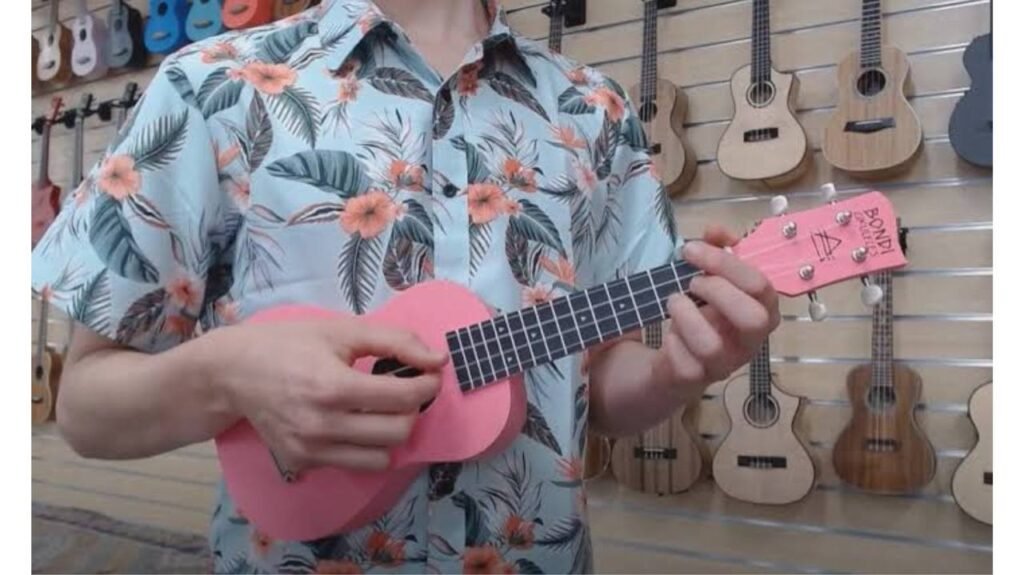
8. Cello
- Description: A larger member of the violin family, with a rich and resonant sound.
- Learning Curve: Requires significant dedication and practice, with a focus on proper technique and bowing.
- Versatility: Found in orchestras, chamber music ensembles, and various genres from classical to folk and pop.
- Why it’s great: Cultivates fine motor skills, develops musicality and expression, and offers a rewarding challenge for dedicated learners.
The Cello: A Deep Dive into the Soul of the Orchestra
The cello, often referred to as the “voice of the orchestra,” stands as a testament to the power and versatility of string instruments. Its rich, resonant tones can evoke a wide range of emotions, from the deepest sorrow to the most joyous exuberance.
A Closer Look:
- Physical Characteristics: The cello is a large, bowed string instrument, larger than the violin and viola but smaller than the double bass. It possesses a distinctive shape, with a rounded back and a long neck culminating in a scroll. Cellists typically sit while playing, holding the instrument between their knees and resting it on a spike that extends from the bottom of the body.
- Sound Production: The cello’s sound is produced by drawing a horsehair bow across its four strings, which are tuned in perfect fifths (C-G-D-A). The player can also produce sounds by plucking the strings (pizzicato). This versatility allows for a wide range of expressive techniques, from lyrical melodies to powerful, driving rhythms.
- Construction: Cellos are meticulously crafted instruments, typically made from high-quality wood such as spruce for the top (soundboard) and maple for the back and sides. The quality of the wood, along with the craftsmanship of the luthier, significantly influences the instrument’s tone and responsiveness.
A Rich History:
The cello has a long and illustrious history, evolving from earlier instruments like the viol. It gained prominence during the Baroque period, with composers like Bach and Vivaldi writing numerous concertos and sonatas for the instrument. The Romantic era witnessed a flourishing of cello repertoire, with composers like Elgar, Dvorák, and Saint-Saëns composing some of the most celebrated cello concertos in the classical canon.
The Cello’s Role in Music:
- Orchestral Pillar: The cello plays a crucial role in the orchestral string section, providing a rich and resonant foundation for the music. It can play melodic lines, provide harmonic support, and contribute to the overall texture and color of the orchestral sound.
- Chamber Music: The cello is a cornerstone of chamber music, forming an integral part of string quartets, trios, and other chamber ensembles.
- Solo Instrument: The cello is a captivating solo instrument, capable of expressing a wide range of emotions with great depth and nuance. Many celebrated composers have written solo works for the cello, showcasing its expressive potential.
- Beyond Classical Music: The cello’s versatility extends beyond classical music. It can be found in various genres, including jazz, folk, and even rock music.
Learning the Cello:
Learning to play the cello requires dedication, patience, and a strong commitment to practice. It involves developing proper technique, including bow control, finger placement, and posture. Finding a qualified cello teacher is essential for guidance and support.
The Rewards:
The rewards of learning the cello are numerous. It fosters musicality, develops fine motor skills and coordination, and provides a deeply satisfying creative outlet. The ability to produce beautiful music and express oneself through this magnificent instrument is a truly rewarding experience.
In Conclusion:
The cello is a remarkable instrument, captivating audiences with its rich sound and expressive potential. Its presence in orchestras, chamber ensembles, and solo performances enriches the musical landscape and continues to inspire generations of musicians and music lovers.
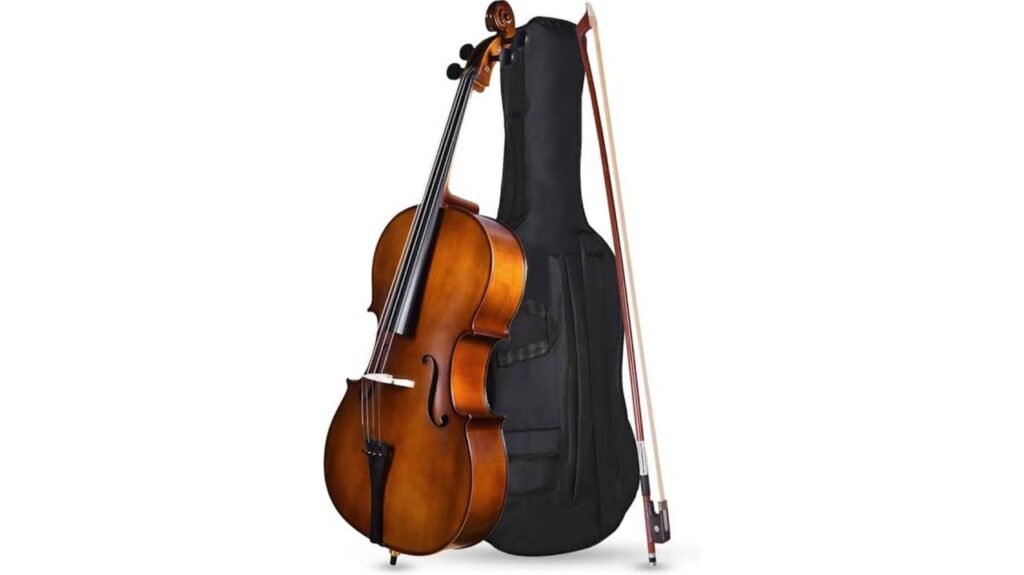
7. Saxophone
- Description: A versatile woodwind instrument with a wide range of sounds, from mellow to powerful.
- Learning Curve: Requires breath control and embouchure technique, but can be more approachable than some other wind instruments.
- Versatility: Found in jazz, blues, funk, and various other genres.
- Why it’s great: Offers a unique and expressive sound, fosters musicality and improvisation, and provides a rewarding musical journey.
The Saxophone: A Deep Dive into its Unique Sound and Versatility
The saxophone, often affectionately referred to as the “sax,” is a captivating instrument with a distinctive voice that bridges the gap between brass and woodwinds. Invented by Adolphe Sax in the 1840s, it quickly gained popularity and has since become a staple in various musical genres, from jazz and blues to classical and pop.
The Anatomy of a Saxophone:
- Single-Reed Instrument: Like a clarinet, the saxophone utilizes a single reed placed on a mouthpiece to produce sound.
- Conical Bore: Unlike cylindrical bore instruments like the clarinet, the saxophone has a conical bore, meaning it starts narrow and gradually widens towards the bell. This contributes to its warm, resonant tone.
- Brass Construction: Though classified as a woodwind instrument, the saxophone is typically made of brass (often with a lacquer or silver plating).
- Keywork: Saxophones feature a complex system of keys that open and close holes along the instrument’s body, allowing players to produce a wide range of pitches.
Common Saxophone Sizes:
Saxophones come in various sizes, each with its own unique tonal characteristics:
- Soprano Saxophone: The smallest and highest-pitched saxophone, with a bright and piercing sound.
- Alto Saxophone: The most common saxophone, offering a balanced and expressive sound.
- Tenor Saxophone: Larger and lower-pitched than the alto, with a warmer and more mellow tone.
- Baritone Saxophone: The largest and lowest-pitched common saxophone, producing a deep and resonant sound.
The Saxophone’s Unique Sound:
The saxophone’s distinctive sound is a result of several factors:
- Conical Bore: The gradual widening of the bore contributes to its warm and resonant tone.
- Single-Reed Mouthpiece: The single-reed mouthpiece produces a rich and expressive sound, capable of a wide range of dynamics and timbres.
- Keywork and Fingering: The complex keywork allows for precise control over pitch and articulation, enabling players to express a wide range of musical ideas.
Versatility in Music:
The saxophone’s versatility is one of its most defining characteristics:
- Jazz: The saxophone is arguably the most iconic instrument in jazz, with legendary players like Charlie Parker, John Coltrane, and Sonny Rollins shaping the genre.
- Classical Music: While not as prevalent as in jazz, the saxophone has found a place in classical music, particularly in 20th and 21st-century compositions.
- Pop and Rock: The saxophone has made significant contributions to pop and rock music, adding a soulful and improvisational element to many songs.
- Funk and Soul: The saxophone is a prominent feature in funk and soul music, providing a driving rhythmic and melodic voice.
Learning the Saxophone:
Learning the saxophone requires dedication, patience, and a good teacher. Key aspects of saxophone playing include:
- Embouchure: Developing a proper embouchure (mouth position) is crucial for producing a clear and consistent tone.
- Breath Control: Effective breath control is essential for playing with proper dynamics and sustaining long notes.
- Fingering: Mastering the fingerings for different notes and scales takes time and practice.
- Improvisation: Many styles of saxophone playing, particularly jazz, emphasize improvisation, which requires creativity and musical intuition.
The Saxophone’s Cultural Impact:
The saxophone has had a profound impact on music and popular culture. Its distinctive sound and expressive capabilities have captivated audiences worldwide, and its influence can be heard in countless musical genres. From the smoky jazz clubs of the 1920s to the modern concert hall, the saxophone continues to inspire and enchant musicians and listeners alike.
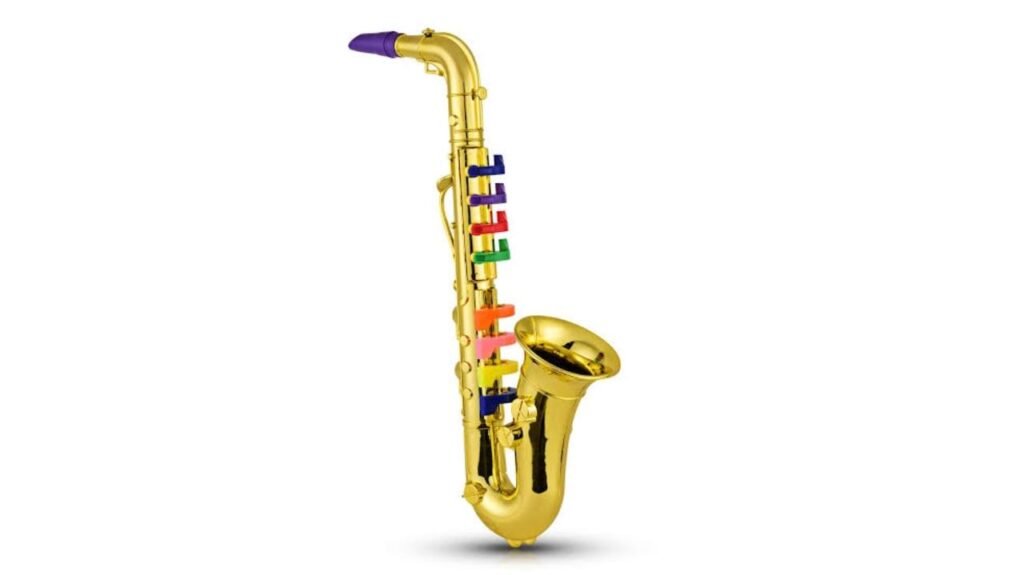
6. Trumpet
- Description: A brass instrument with a bright and powerful sound, often used in jazz, brass bands, and orchestral music.
- Learning Curve: Requires strong lung capacity and embouchure control, which can take time to develop.
- Versatility: Found in various genres, from classical and jazz to pop and rock.
- Why it’s great: Develops lung capacity and breath control, fosters musicality and expression, and offers a rewarding sense of accomplishment.
The Trumpet: A Deep Dive into a Powerful Instrument
The trumpet, with its bright, piercing sound, is a captivating instrument that has captivated audiences for centuries. This brass instrument, characterized by its coiled tubing and flared bell, holds a prominent place in various musical genres, from classical and jazz to pop and rock.
How it Works:
Unlike woodwind instruments, the trumpet produces sound through the vibration of the player’s lips against the mouthpiece. This “buzzing” sound initiates a resonance within the instrument’s air column, creating the characteristic trumpet tones.
Key Components:
- Mouthpiece: The mouthpiece is where the player’s lips create the buzzing sound.
- Leadpipe: The leadpipe connects the mouthpiece to the main tubing of the trumpet.
- Valves: Three valves alter the length of the air column, allowing the player to change pitches.
- Tuning Slides: These slides allow the player to fine-tune the pitch of the instrument.
- Bell: The flared bell amplifies the sound produced by the instrument.
Learning the Trumpet:
Learning to play the trumpet requires dedication and practice. Key aspects of trumpet playing include:
- Embouchure: Developing a proper embouchure (lip position) is crucial for producing clear and consistent tones.
- Breath Control: Strong breath support is essential for playing with power, control, and endurance.
- Finger Coordination: Mastering the three valves requires precise finger coordination and dexterity.
- Ear Training: Developing a strong ear for pitch and intervals is crucial for accurate playing.
Challenges:
- Physical Demands: Playing the trumpet can be physically demanding, requiring strong lung capacity and lip strength.
- Embouchure Issues: Developing and maintaining a consistent embouchure can be challenging and may take time.
- Sound Production: Achieving a clear, focused sound requires consistent practice and attention to technique.
Rewards:
- Expressive Power: The trumpet is a highly expressive instrument, capable of conveying a wide range of emotions.
- Musical Versatility: The trumpet is used in a variety of musical genres, offering opportunities for diverse musical exploration.
- Personal Growth: Learning to play the trumpet fosters discipline, perseverance, and a sense of accomplishment.
Famous Trumpet Players:
- Louis Armstrong: A legendary jazz trumpeter who revolutionized the genre with his improvisational skills.
- Miles Davis: An influential jazz trumpeter known for his innovative and introspective style.
- Wynton Marsalis: A renowned classical and jazz trumpeter, composer, and educator.
- Dizzy Gillespie: A bebop pioneer known for his innovative techniques and high-pitched style.
The trumpet, with its powerful sound and expressive capabilities, continues to inspire and captivate musicians and audiences alike.
Disclaimer: This is a significantly expanded version of the previous response, providing a more in-depth and comprehensive overview of the trumpet instrument.
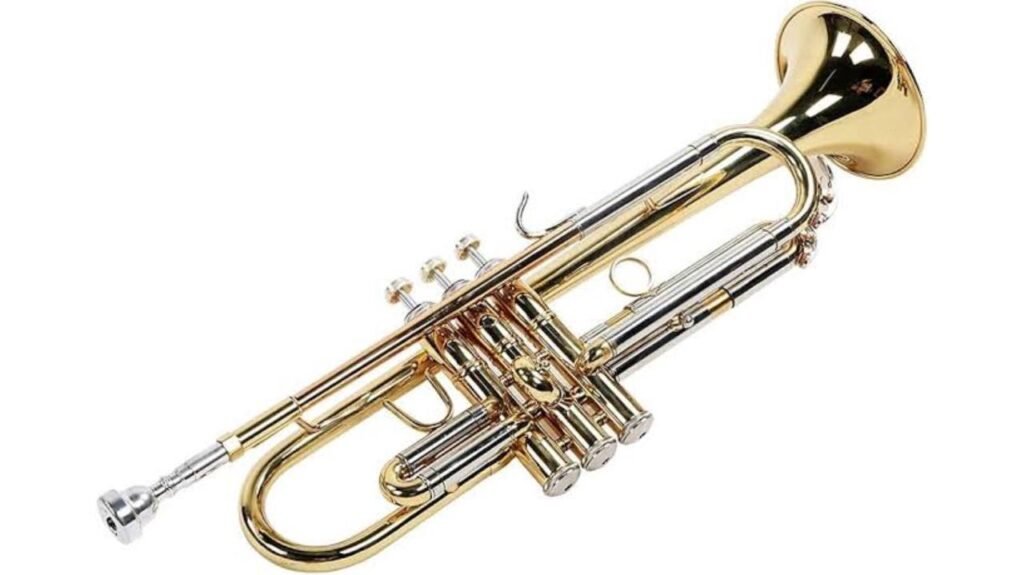
5. Flute
- Description: A woodwind instrument with a sweet and melodious sound, often associated with classical music.
- Learning Curve: Can be challenging for beginners, requiring breath control and proper embouchure.
- Versatility: Used in orchestras, bands, and various genres from classical to jazz and folk.
- Why it’s great: Develops breath control and lung capacity, fosters musicality and expression, and provides a soothing and uplifting sound.
The Flute: A Breath of Melody
The flute, a member of the woodwind family, is a captivating instrument known for its ethereal and expressive sound. Its graceful lines and delicate construction belie the power and versatility it offers to musicians.
How it Works:
Unlike many other instruments, the flute doesn’t rely on vibrating strings or reeds. Instead, it produces sound through a process called edge-blown air excitation.
- Embouchure: The player directs a stream of air across the edge of the embouchure hole on the headjoint.
- Air Column Vibration: This airflow creates vibrations in the air column within the flute’s body.
- Pitch Control: By altering the airflow, fingerings, and embouchure, the player can control the pitch and timbre of the sound.
Types of Flutes:
- Concert Flute: The most common type, typically made of metal (often silver or nickel-plated) and pitched in C.
- Piccolo: A smaller version of the concert flute, producing a higher-pitched sound.
- Alto Flute: Larger than the concert flute, producing a lower and richer sound.
- Bass Flute: Significantly larger than the concert flute, producing a deep and resonant sound.
Learning the Flute:
Learning the flute requires dedication and consistent practice. Key aspects of flute playing include:
- Embouchure Development: Developing a stable and consistent embouchure is crucial for producing a clear and focused sound.
- Breath Control: Flute playing demands excellent breath control, allowing for sustained notes and dynamic expression.
- Finger Technique: Mastering the fingerings for different notes and scales requires precision and coordination.
- Articulation: Learning various articulation techniques, such as tonguing and slurring, adds nuance and expression to the music.
Musical Applications:
The flute is a versatile instrument found in a wide range of musical genres:
- Classical Music: A prominent member of the orchestra, the flute plays a vital role in symphonies, concertos, and chamber music.
- Jazz: The flute adds a unique and expressive voice to jazz ensembles, particularly in bebop and cool jazz.
- Folk Music: The flute is featured in various folk music traditions around the world, from Irish jigs to Native American flute music.
- World Music: The flute is found in many world music traditions, including Indian classical music, Chinese music, and Andean music.
Beyond the Music:
Learning the flute offers numerous benefits beyond musical expression:
- Improved Lung Capacity: Regular flute playing strengthens lung capacity and improves breathing techniques.
- Enhanced Coordination: The intricate fingerings and breath control required for flute playing enhance coordination and fine motor skills.
- Stress Relief: Playing the flute can be a relaxing and meditative experience, helping to reduce stress and promote mental well-being.
The flute is a captivating instrument that offers a lifetime of musical exploration and self-discovery. With dedication and practice, aspiring flautists can unlock its expressive potential and experience the joy of creating beautiful music.
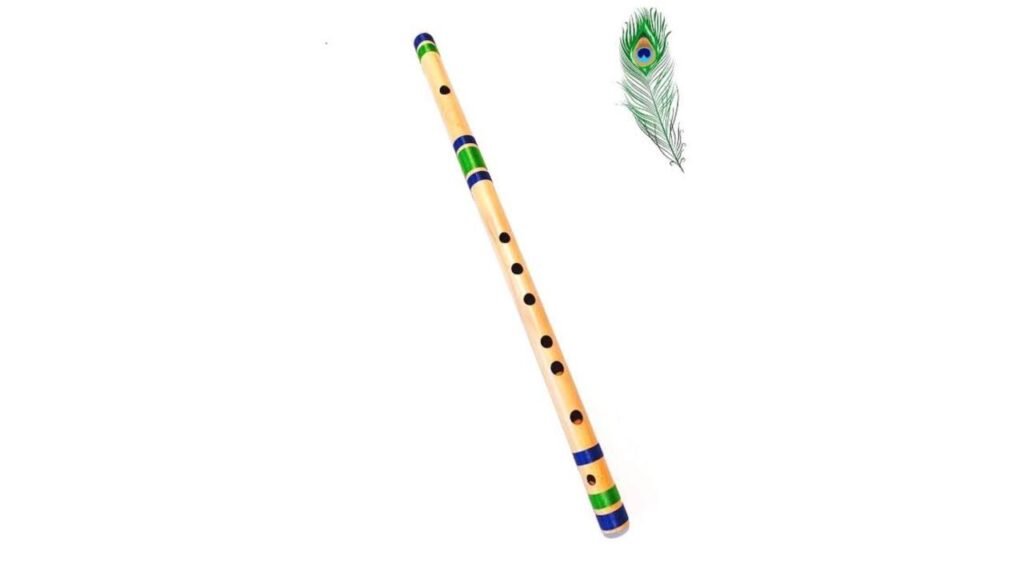
4. Violin
- Description: A classic string instrument known for its beautiful and expressive sound.
- Learning Curve: Requires significant dedication and practice to master, with a focus on proper technique and bowing.
- Versatility: Found in orchestras, chamber music ensembles, and various genres from classical to folk.
- Why it’s great: Cultivates fine motor skills, develops musicality and expression, and offers a rewarding challenge for dedicated learners.
The Violin: A Journey into Melodic Mastery
The violin, often referred to as the “fiddle,” stands as a testament to human ingenuity and artistry. This small yet powerful instrument has captivated audiences for centuries with its expressive range, from soaring melodies to heart-wrenching laments.
A Closer Look:
- Construction: The violin is a wooden string instrument, typically crafted from spruce (for the top) and maple (for the back and sides). It features four strings, usually tuned to G, D, A, and E, and is played by drawing a bow across the strings.
- Playing Technique:
- Left Hand: The left hand fingers the strings on the fingerboard, determining the pitch of the notes.
- Right Hand: The right hand draws the bow across the strings, controlling the volume, tone, and articulation of the sound. Techniques like bowing, vibrato (rapid oscillations of the pitch), and pizzicato (plucking the strings) add expressive nuances.
- Sound Production: The vibrations of the strings are transmitted through the bridge to the hollow body of the violin, amplifying the sound. The shape and quality of the wood, as well as the craftsmanship, significantly influence the instrument’s tone.
A Rich History:
The violin’s origins can be traced back to the Middle Ages, evolving from earlier string instruments like the viol. By the 17th century, it had become a cornerstone of European classical music, with renowned luthiers like Antonio Stradivari and Giuseppe Guarneri crafting instruments that are still revered today.
Versatility and Impact:
The violin’s versatility is undeniable. It thrives in diverse musical genres:
- Classical Music: A cornerstone of orchestras, chamber music ensembles, and solo performances.
- Folk Music: A mainstay in various folk traditions around the world, from Irish and Scottish fiddling to bluegrass and country music.
- Jazz: The violin has found a place in jazz, particularly in styles like gypsy jazz and jazz fusion.
- World Music: The violin is featured in numerous world music styles, adding its expressive voice to diverse musical traditions.
Learning the Violin:
Learning the violin requires dedication and consistent practice.
- Early Stages: Focus on developing proper posture, left-hand fingering, and right-hand bowing techniques.
- Intermediate Level: Explore more advanced techniques like vibrato, shifting positions, and playing double stops.
- Advanced Level: Master complex pieces, develop artistic expression, and refine your musicality.
The Rewards:
The journey of learning the violin is a deeply rewarding one. It cultivates:
- Fine Motor Skills: Playing the violin requires precision and dexterity, enhancing fine motor skills.
- Discipline and Focus: Consistent practice builds discipline and focus, essential skills applicable beyond music.
- Emotional Expression: The violin allows for profound emotional expression, enabling you to convey a wide range of feelings through music.
- Lifelong Learning: The violin is an instrument that can be explored and mastered throughout a lifetime, offering continuous growth and discovery.
Choosing a Violin:
Selecting a suitable violin is crucial. Consider factors such as budget, playing level, and personal preferences. Consult with a qualified violin teacher or luthier for guidance.
In Conclusion:
The violin is a captivating instrument that offers a lifetime of musical exploration and personal growth. With dedication and perseverance, aspiring violinists can unlock its expressive potential and embark on a rewarding musical journey.
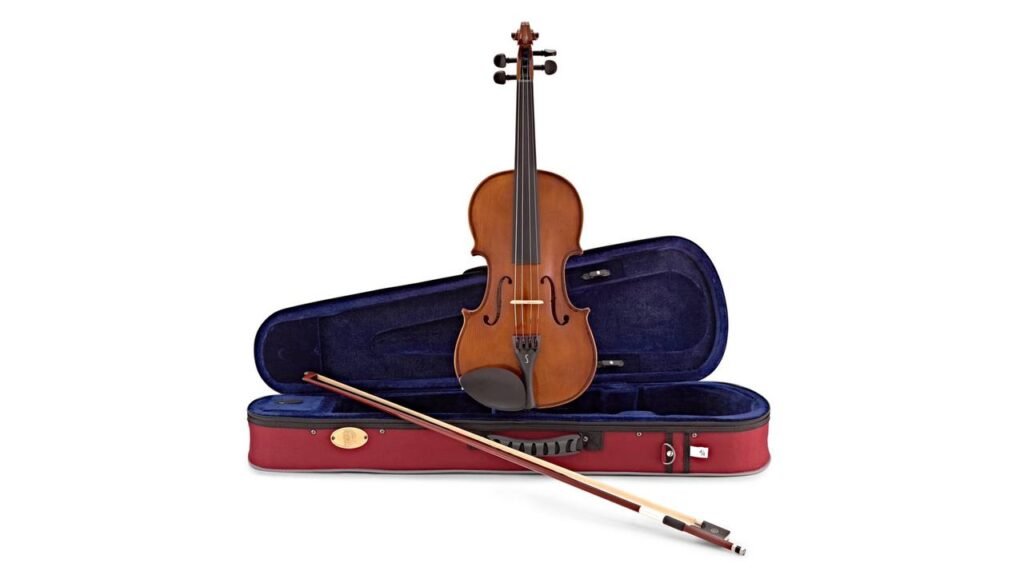
3. Drums
- Description: A dynamic and expressive instrument that forms the rhythmic foundation of many musical styles.
- Learning Curve: Physically demanding, requiring coordination and developing a strong sense of rhythm.
- Versatility: Essential for various genres, from rock and jazz to funk and world music.
- Why it’s great: Excellent for stress relief, develops coordination and motor skills, and provides a high-energy and satisfying musical experience.
Drums: The Heartbeat of Music
Drums are arguably the most primal and universally recognized musical instruments, embodying rhythm and driving the pulse of music across cultures and genres.
Types of Drums:
The world of drums is incredibly diverse, encompassing a vast array of instruments with varying sizes, shapes, and sounds. Here are some prominent types:
- Drum Kit: The most common type in modern music, consisting of a set of drums and cymbals played by a single musician.
- Bass Drum: The largest drum, producing deep, low-pitched sounds. Played with a foot pedal.
- Snare Drum: A shallow drum with snares (wires) that vibrate against the bottom head, creating a sharp, resonant sound.
- Tom-toms: Cylindrical drums of varying sizes, producing mid-range pitches.
- Cymbals: Flat, metallic discs that produce crashing, ringing sounds.
- Congas: Cuban drums with a deep, resonant sound, played with the hands.
- Bongos: A pair of small, conically shaped drums, played with the hands.
- Djembe: An African drum with a goblet-shaped body, played with the hands.
- Timpani: Large, kettle-shaped drums with a deep, resonant sound, commonly used in orchestras.
- Tabla: A pair of Indian drums with a complex rhythmic structure.
Playing the Drums:
- Technique: Drumming requires a combination of physical coordination, rhythmic precision, and musicality.
- Hand Technique: Developing proper hand technique, including grip, stroke, and rebound, is crucial for achieving speed, accuracy, and control.
- Foot Technique: Mastering footwork, including coordination between the feet and hands, is essential for playing complex rhythms and patterns.
- Dynamic Control: Learning to control the volume and intensity of the sound is vital for musical expression.
- Rhythm: Drums are the foundation of rhythm in music. Drummers are responsible for keeping the beat, establishing the groove, and providing the rhythmic framework for other instruments.
- Musicality: While technical proficiency is important, musicality is equally crucial. A great drummer understands the nuances of the music, interacts with other musicians, and contributes to the overall musical expression.
The Benefits of Drumming:
- Physical Benefits: Drumming is a physically demanding activity that improves coordination, motor skills, and cardiovascular health.
- Mental Benefits: It enhances cognitive function, improves memory, and reduces stress.
- Emotional Benefits: Drumming is a highly expressive and cathartic activity that provides an outlet for emotions and fosters a sense of rhythm and flow.
- Social Benefits: Playing in a band or ensemble provides opportunities for social interaction, collaboration, and teamwork.
Drumming in Different Genres:
Drums play a vital role in a wide range of musical genres, including:
- Rock: Powerful, driving rhythms, often emphasizing heavy beats and cymbal crashes.
- Jazz: Complex rhythms, intricate patterns, and improvisation.
- Funk: Groovy, syncopated rhythms, often featuring heavy use of the bass drum and snare drum.
- Latin Music: Energetic rhythms, incorporating elements of Afro-Cuban and Brazilian music.
- World Music: A diverse range of styles, from the intricate rhythms of African drumming to the hypnotic beats of Indian music.
Conclusion:
Drums are a powerful and versatile instrument that have played a crucial role in music throughout history. Whether you’re drawn to the raw energy of rock drumming, the intricate rhythms of jazz, or the cultural significance of traditional drumming styles, the drums offer a rewarding and fulfilling musical journey.

2. Guitar
- Description: A popular and portable instrument, available in acoustic, electric, and bass varieties.
- Learning Curve: Can have a steeper initial learning curve, requiring finger strength and coordination.
- Versatility: Essential for countless genres, from folk and blues to rock and metal.
- Why it’s great: Highly portable, encourages songwriting and improvisation, and fosters a strong sense of rhythm.
The Guitar: A Deep Dive into a Musical Icon
The guitar, a timeless and versatile instrument, has captivated musicians and music lovers for centuries. Its rich history, diverse sounds, and widespread popularity make it one of the most beloved instruments globally.
Types of Guitars:
- Acoustic Guitar:
- Classical Guitar: Features nylon strings, a wider neck, and a focus on classical and flamenco music.
- Steel-String Acoustic Guitar: Equipped with steel strings, producing a brighter and louder sound, commonly used in folk, country, and pop music.
- Electric Guitar:
- Solid-Body Electric Guitar: Features a solid body, typically made of wood, and relies on electronic amplification for sound production. Popular in rock, blues, and heavy metal.
- Hollow-Body and Semi-Hollow-Body Electric Guitars: Combine elements of acoustic and solid-body guitars, offering a blend of warm acoustic tones and powerful amplified sound.
Key Components of a Guitar:
- Body: The main resonating chamber, responsible for producing and amplifying sound.
- Neck: The long, slender part of the guitar, featuring frets that determine the pitch of the notes.
- Headstock: The part of the neck that holds the tuning machines.
- Fretboard: The part of the neck where the strings are pressed down to create different notes.
- Bridge: The part of the guitar where the strings are anchored to the body.
- Strings: Typically six strings, although variations exist with 12 or more strings.
- Pickups (for electric guitars): Transducers that convert string vibrations into electrical signals.
Playing Techniques:
- Strumming: Striking multiple strings simultaneously with a pick or fingers, creating chords and rhythmic patterns.
- Picking: Plucking individual strings with a pick or fingers, often used for melodic lines and solos.
- Fingerstyle: Playing melodies and chords using the fingers of the right hand.
- Slide Guitar: Playing with a slide (a metal or glass tube) on the strings, creating a unique, bluesy sound.
Learning the Guitar:
- Finding an Instructor: A qualified guitar teacher can provide personalized guidance, correct technique, and accelerate learning.
- Self-Study: Numerous online resources, books, and video tutorials are available for self-learners.
- Practice Regularly: Consistent practice is crucial for developing muscle memory, improving technique, and building musicality.
The Guitar’s Impact on Music:
The guitar has played a pivotal role in shaping the course of music history. From classical and flamenco to blues, rock, jazz, and countless other genres, the guitar has proven its versatility and enduring appeal.
- Folk and Blues: The acoustic guitar has been a cornerstone of folk and blues music, accompanying storytelling and expressing raw emotion.
- Rock and Roll: The electric guitar revolutionized popular music, becoming the driving force behind rock and roll and its many subgenres.
- Jazz: The guitar has played a vital role in jazz, contributing to improvisation, harmonic exploration, and rhythmic complexity.
- World Music: The guitar has been adapted and integrated into various world music traditions, from flamenco to Brazilian choro.
Top 10 Best Fashion Shows In India….click here
Conclusion:
The guitar is more than just an instrument; it’s a symbol of creativity, self-expression, and musical exploration. Whether you’re a seasoned musician or a curious beginner, the guitar offers a rewarding journey of musical discovery and lifelong enjoyment.
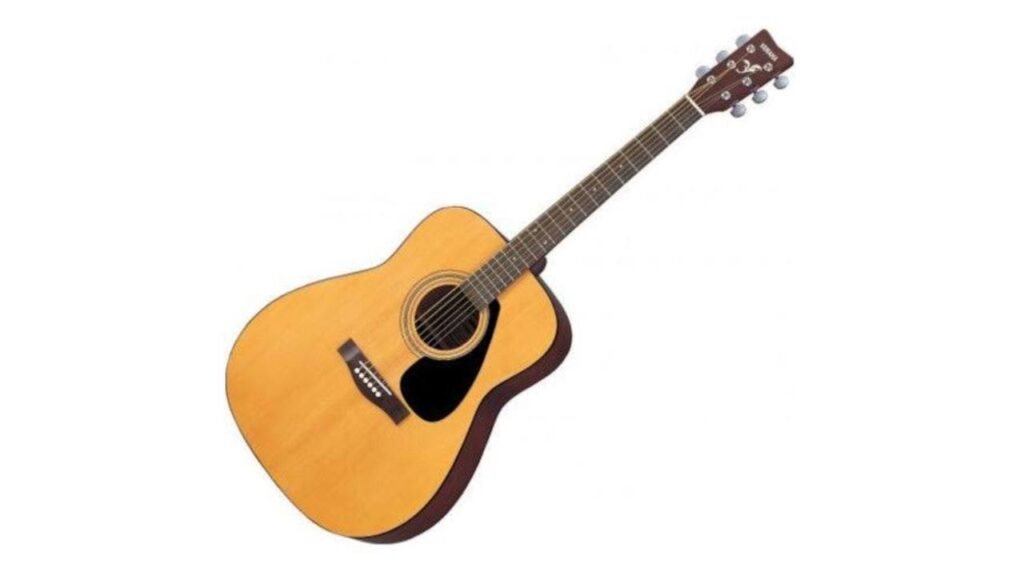
1. Piano/Keyboard:
- Description: The piano, with its 88 keys, offers a wide range of sounds and versatility. Keyboards are electronic versions with built-in sounds and features.
- Learning Curve: Relatively beginner-friendly, with clear keys and a structured learning progression.
- Versatility: Suitable for various genres, from classical and jazz to pop and rock.
- Why it’s great: Develops both hands independently, fosters musicality and creativity, and provides a solid foundation for learning other instruments.
Piano/Keyboard: A Deep Dive into Melodic Mastery
The piano and keyboard stand as cornerstones of musical expression, offering a captivating blend of versatility, expressiveness, and accessibility. This section delves deeper into the nuances of these instruments, exploring their unique characteristics, learning journeys, and the profound impact they have on musical education and creativity.
Understanding the Piano:
- The Acoustic Piano:
- Construction: A complex instrument comprising 88 keys, hammers that strike strings, and a soundboard that amplifies the vibrations.
- Types:
- Grand Piano: The largest and most resonant type, offering the richest tonal quality.
- Upright Piano: A more compact and affordable option, suitable for smaller spaces.
- Sound Production: When a key is pressed, a hammer strikes a string, producing a sound that resonates through the soundboard. The pianist’s touch and technique significantly influence the volume, tone, and timbre of the sound.
- The Keyboard:
- Electronic Versatility: Keyboards are electronic instruments that emulate the sound of a piano and often incorporate a wide range of other sounds, including organs, synthesizers, and even orchestral instruments.
- Features: Keyboards often include features like built-in speakers, MIDI connectivity, recording capabilities, and the ability to layer sounds and create unique musical textures.
- Portability: Keyboards are generally more portable than acoustic pianos, making them ideal for travel and practice.
The Learning Journey:
- Early Stages:
- Fundamentals: Beginners typically start with learning basic music theory, including notes, rhythms, and scales.
- Technique: Developing proper hand position, finger independence, and coordination is crucial.
- Repertoire: Simple pieces like nursery rhymes, folk songs, and classical etudes provide a solid foundation.
- Intermediate Level:
- Expanding Repertoire: Exploring more challenging pieces, including classical sonatas, jazz standards, and popular music.
- Technique Refinement: Developing advanced techniques such as arpeggios, scales, and chords.
- Sight-reading: Improving the ability to read and interpret music at sight.
- Advanced Level:
- Mastering Technique: Refining technique, developing nuanced touch, and achieving expressive control.
- Exploration and Creativity: Exploring advanced repertoire, improvising, and composing original music.
- Performance: Preparing for recitals, auditions, and other performance opportunities.
Benefits of Learning Piano/Keyboard:
- Cognitive Development: Playing piano enhances cognitive skills such as memory, problem-solving, and spatial reasoning.
- Emotional Intelligence: Music engages emotions and fosters emotional intelligence, promoting self-expression and stress relief.
- Creativity and Imagination: Learning piano encourages creativity, allowing for self-expression and the exploration of musical ideas.
- Discipline and Perseverance: Mastering piano requires dedication, discipline, and perseverance, cultivating valuable life skills.
- Social and Interpersonal Skills: Playing in ensembles or performing for others fosters social interaction and communication skills.
Beyond the Technical:
The piano and keyboard offer a unique avenue for artistic expression and personal growth. They provide a platform for exploring diverse musical genres, developing creativity, and cultivating a lifelong appreciation for the beauty of music. Whether you aspire to become a concert pianist, a casual player, or simply enjoy the therapeutic benefits of music, the piano and keyboard offer a rewarding and enriching journey of musical discovery.
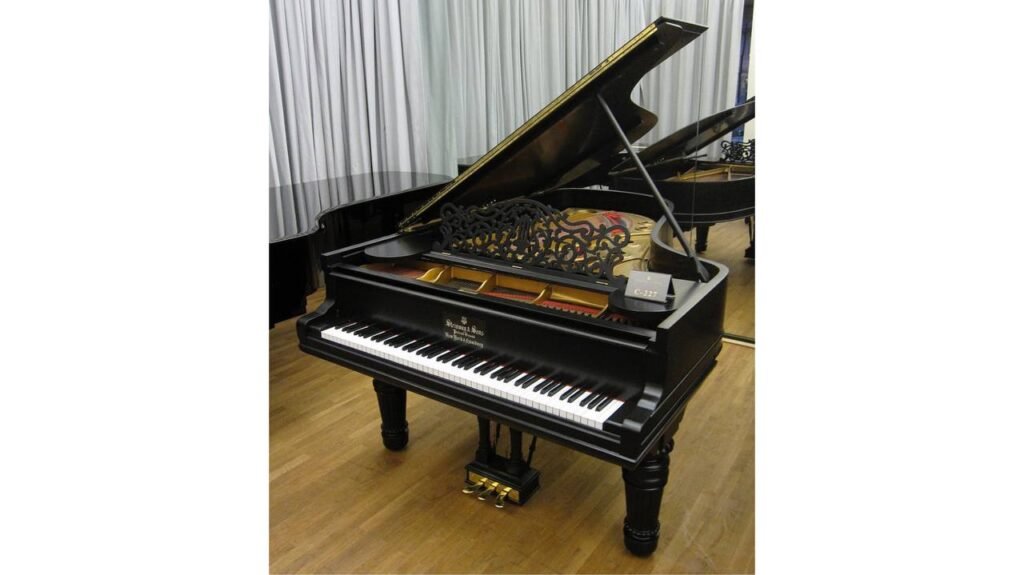
Choosing the Right Instrument:
Selecting the right instrument is a personal journey. Consider factors such as your interests, learning style, physical limitations, and the type of music you enjoy. Experiment with different instruments, attend workshops, and talk to experienced musicians to find the perfect fit for you.
The Journey of Learning:
Learning a musical instrument is a rewarding and lifelong journey. It requires dedication, patience, and a love for music. Embrace the challenges, celebrate your progress, and enjoy the beautiful sounds you create along the way.
Disclaimer: This list is subjective and represents just a small selection of the many wonderful musical instruments available.
FAQs
Q: What criteria were used to determine which instruments are “best”?
A: The “best” instruments were chosen based on a combination of factors, including popularity, versatility (ability to be used in different genres), ease of learning for beginners, cultural significance, and overall impact on music history. It’s subjective, but we’ve considered a range of factors.
Q: Is this list only for beginners, or are there instruments suitable for experienced musicians as well?
A: The list includes instruments that are popular with beginners, but many are also incredibly versatile and offer endless possibilities for experienced musicians. The focus is on widely played and influential instruments, regardless of skill level.
Q: I’m interested in a specific genre of music (e.g., rock, jazz, classical). Are there any instruments on the list that are particularly well-suited for that genre?
A: Yes, certain instruments are more commonly associated with specific genres. For example, the electric guitar is heavily featured in rock music, the saxophone is prominent in jazz, and the piano is a cornerstone of classical music. The blog post should ideally highlight these connections.
Q: What if my favorite instrument isn’t on the list? Does that mean it’s not a “good” instrument?
A: Not at all! This list is not exhaustive and is based on a selection of widely popular and influential instruments. Many other wonderful instruments exist. The absence of a particular instrument doesn’t diminish its value or importance. The point is to highlight some of the most common and versatile instruments available.
Q: Where can I find resources to learn how to play these instruments?
A: There are many resources available for learning musical instruments, including online tutorials (YouTube, online courses), private lessons with qualified instructors, music schools, and community music programs. The blog post could ideally provide links to some helpful resources.
